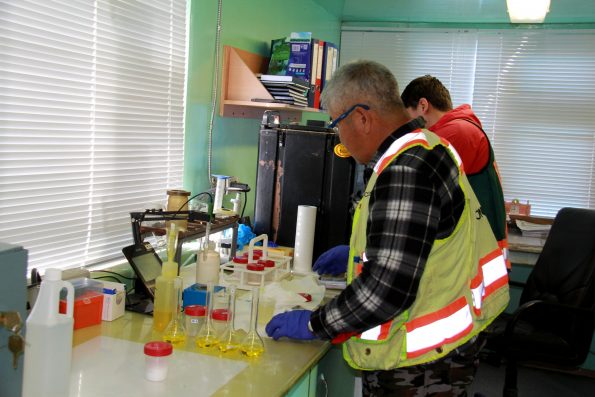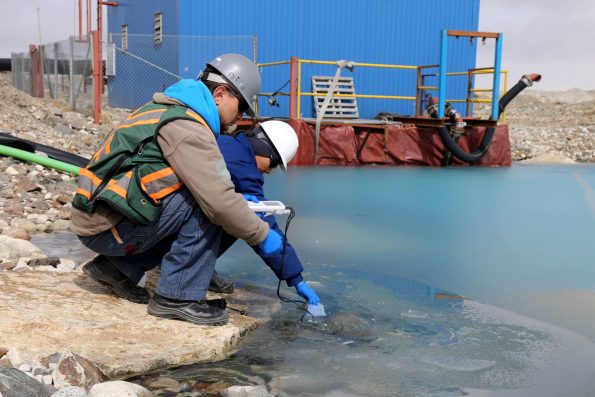Environmental Monitoring
Our monitoring programs follow Kyrgyz and international standards, and include:
- Water quality and flow
- Effluent quality and flow
- Biodiversity
- Air quality
- Waste streems
- Acid rock drainage
- Meteorology
Our operations are subject to regular audits by Kyrgyz and international companies and experts. We also receive inspections from relevant national agencies and audits.***
Kumtor maintains a system for reporting environmental and safety related incidents. This is based on a five point reporting system which allows us to classify reportable and non-reportable environmental incidents and spills. The classification system considers level of environmental impact, national and other regulatory compliance, and concern of local communities.
Quality assurance and control
Most of our analyses are contracted to a professional external laboratory, Stewart Assay and Environmental Laboratories LLC (SAEL), part of the international ALS group. SAEL is located in Kara-Balta in the Kyrgyz Republic. We also maintain an on-site laboratory to support operational control. We routinely review our sampling program and processes, updating them as appropriate.
As part of quality control, samples are sent to expert local and international laboratories including SAEL (in Kyrgyz Republic), Saskatchewan Research Council (Canada), and Lakefield Research Laboratories (Canada). Lakefield Research specializes in cyanide chemistry and analysis.
Meteorological monitoring
We have a mutually beneficial arrangement with the Kyrgyz hydrometeorological agency. One of our monitoring stations is a formal part of the national weather network, while the agency provides us with local weather forecasts, important for safe and efficient operation in the extreme climatic conditions we work under.
Hydrological flow monitoring
We track hydrological flows of the main water bodies within the concession area. These include Kumtor River and its principal tributaries (including Chon-Sarytor, Kichi Sarytor and Lysyi Creek), Petrov Lake, and the Upper and Lower Diverstion Ditches that divert the Arabel River around the tailings management facility.
We follow a comprehensive program of sampling and analyses for water quality based on a network of more than 30 stations.The locations of monitoring points are detailed in our Environment Reports




